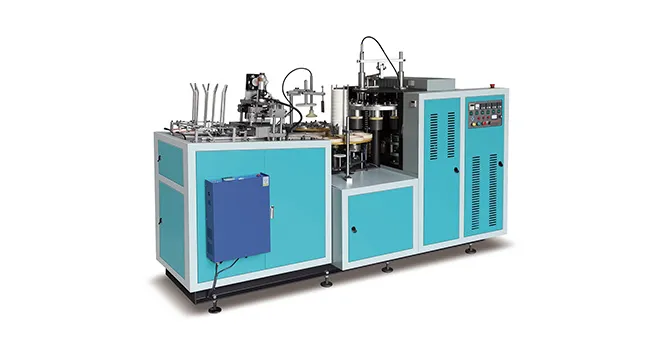The paper bowl machine is crucial in the food packaging industry. Its efficient operation ensures the supply of paper bowls and meets diverse needs. This guide provides operators with operating instructions covering all aspects from installation to maintenance, helping them operate skillfully to achieve efficient production and stable quality.
1. Machine Installation
Location Selection: Choose a flat, dry, and well-ventilated area with sufficient space for the machine's operation and maintenance. Ensure the floor can support the weight of the machine and is free from excessive vibrations.
Power Connection: Connect the machine to a stable power source with the correct voltage and frequency specified in the machine's manual. Typically, a three-phase power supply is required. Use appropriate electrical cables and ensure proper grounding to prevent electrical hazards.
Level Adjustment: Use a spirit level to adjust the machine's feet and ensure it is perfectly level. This is crucial for the accurate operation of the forming and cutting mechanisms.
2. Material Preparation
Paper Selection: Use single or double PE-coated paper within the specified grammage range (usually 150 - 350g/m²). Ensure the paper is of high quality, free from defects such as wrinkles, holes, or uneven coating. The paper roll should be properly mounted on the machine's paper feeding mechanism.
Silicone Oil: Fill the silicone oil tank with food-grade silicone oil. Check the oil level regularly and refill as needed. The quality of the silicone oil affects the paper bowl's release and the prevention of food sticking.
3. Machine Setup
Production Specifications: Set the desired paper bowl size, height, and capacity through the machine's control panel. This can usually be adjusted in the parameters menu. Input the values accurately according to the product requirements.
Speed Adjustment: Set the production speed according to the machine's capacity and the operator's skill level. Start with a lower speed during the initial setup and gradually increase it after ensuring smooth operation. Avoid setting the speed too high, which may lead to paper jams or poor-quality products.
4. Operation Process
Initial Startup: Power on the machine and perform a self-check. The machine's control system will detect and display any errors or malfunctions. If any issues are detected, refer to the troubleshooting section in the manual.
Automatic Paper Feeding: The machine will automatically draw paper from the roll. Monitor the paper feeding process to ensure it is smooth. If the paper jams, stop the machine immediately and clear the jam following the correct procedure.
Preheating and Forming: The paper passes through the preheating section to soften it before being formed into a bowl shape by the molds. Monitor the temperature and pressure settings to ensure proper forming. Adjust the settings if the paper bowls show signs of under-forming or over-forming.
Oiling and Bottom Processing: Silicone oil is applied to the inner surface of the paper bowl, and the bottom is cut and processed. Check the oiling uniformity and the quality of the bottom cutting. If the oiling is uneven or the bottom is not properly cut, adjust the relevant components or settings.
Product Collection: The finished paper bowls are collected at the end of the production line. Ensure the collection area is clean and organized. Periodically remove the collected paper bowls to prevent overcrowding and potential damage.
5. Maintenance and Cleaning
Regular Cleaning: After each production shift or after a certain number of production runs, clean the machine's surfaces, molds, and paper feeding mechanism. Use a soft brush and a mild cleaning agent to remove paper debris, silicone oil residue, and dust.
Lubrication: Lubricate the moving parts of the machine, such as gears, shafts, and bearings, according to the recommended lubrication schedule. Use high-quality lubricants suitable for the machine's operating conditions.
Component Inspection: Regularly inspect the machine's key components, including motors, sensors, and control boards. Check for signs of wear, loose connections, or damage. Replace any faulty components immediately.
6. Troubleshooting
Paper Jam: If a paper jam occurs, first stop the machine. Then, carefully remove the jammed paper following the machine's paper path. Check for any foreign objects or damaged parts that may have caused the jam.
Malfunction Indication: If the machine displays an error code or malfunction indication, refer to the manual's troubleshooting guide. The guide will provide detailed instructions on how to diagnose and fix the problem.
Quality Issues: If the produced paper bowls have quality problems such as poor sealing, uneven walls, or incorrect dimensions, check the machine's settings, molds, and paper quality. Adjust the settings or replace the molds if necessary.
By following this comprehensive usage guide, operators can ensure the efficient and reliable operation of the paper bowl machine, producing high-quality paper bowls while maximizing the machine's lifespan and minimizing downtime.


 Nov 16,2024
Nov 16,2024








